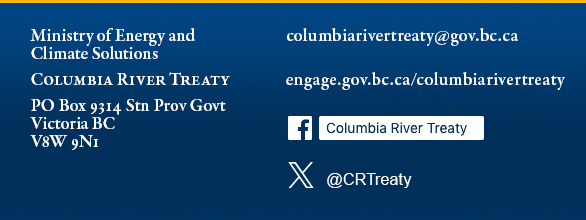Resources
Columbia River Treaty
Edition: April 2024

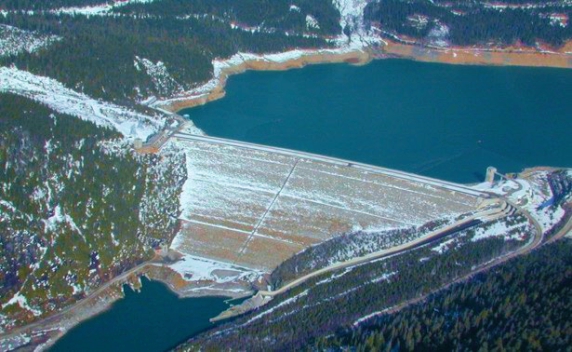
Mica Dam
Update on Negotiations Towards a Modernized Columbia River Treaty
2023 was a year of accelerated activity in the ongoing process of modernizing the Columbia River Treaty.
The pace of negotiations between Canada and the U.S. intensified with delegations from both countries meeting for five formal rounds of discussions in January (Vancouver), March (Washington DC), May (Kelowna), August (Seattle) and October (Portland). Numerous virtual intersessional meetings were held between each round to make further progress on technical issues, and advance discussions on the challenges and opportunities in integrating Canada and the United States’ respective and mutual water-management objectives.

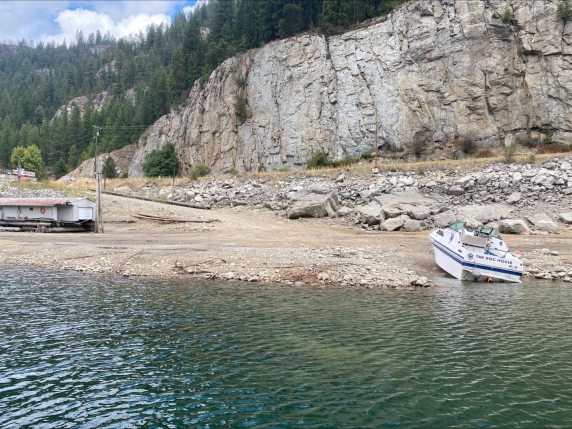
Scottie’s Marina near Syringa Provincial Park on Arrow Lakes Reservoir, August 2023
2023’s Low Water Levels in Arrow Lakes Reservoir
Arrow Lakes Reservoir is part of an interconnected system of waterways in the Canadian Columbia Basin depended on by many forms of life, both in and out of the water. It is also one of three reservoirs in B.C. created by dams built under the Columbia River Treaty. Operation of the Treaty dams requires holding and releasing water to manage downstream flood risk and enable hydropower generation, inherently resulting in fluctuating reservoir elevations. It should be noted, though, that the Arrow Lakes did fluctuate seasonally in their natural state before the dam was built. Water levels are also subject to changes in climate and weather patterns. Last year, conditions were particularly challenging as the severe province-wide drought, combined with Columbia River Treaty requirements, resulted in dramatic seasonally low water levels on Arrow Lakes Reservoir.
Low snowpacks in the winter of 2022/23, early snowmelt last spring, and the provincial drought and lack of rainfall over the summer and fall, significantly reduced the amount of water flowing into Arrow Lakes Reservoir last year. At the same time, B.C. was still required to meet its obligations under the Treaty to provide a certain volume of water to the U.S. for flood risk management purposes and downstream power generation. The Treaty requirement is another factor that contributed to the severe drafting on Arrow Lakes last year over the later part of the summer and fall. Canada is required to release more water during dry conditions in the U.S. to enable the U.S. to meet their firm energy requirements.

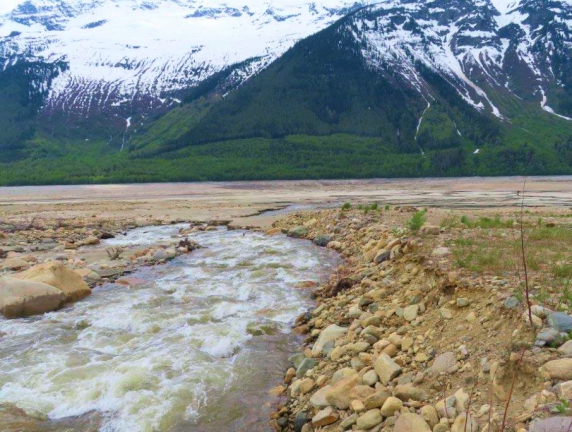
Kinbasket Reservoir, photo by Greg Utzig
Climate Change and the Columbia River Treaty
Written by Greg Utzig, P.Ag. Conservation Ecologist
Climate change is top of mind for many Columbia Basin residents these days, as a persistent province-wide drought is having a significant impact on the region’s waterways, including Columbia River Treaty reservoirs. The following analysis and projection of climate change impacts on the Basin is offered by Greg Utzig, a local conservation ecologist and land use planning consultant with over 35 years experience in conducting environmental impact assessments. Greg is also a key member of the Upper Columbia Basin Environmental Collaborative.
Climate change, or more appropriately “climate disruption,” will bring significant changes to ecosystems and water management in the Upper Columbia Basin (UCB). Some changes are already occurring, and the extent to which these changes will proceed depends on the success of global efforts to eliminate greenhouse gas emissions.
The climate of the UCB is a product of interactions between marine air masses off the Pacific, continental, air masses from the north and east, and the mountain ranges within the Basin.

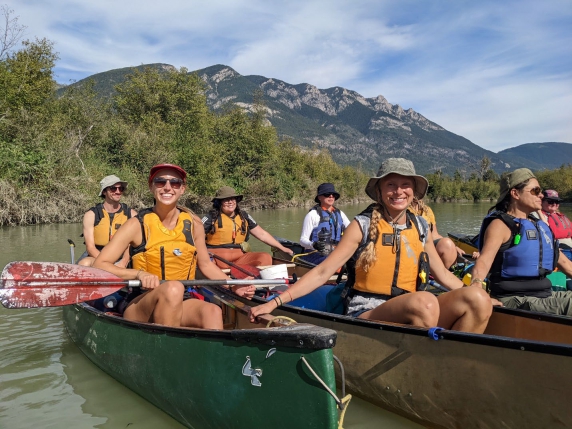
Carly Christy (left) canoeing the Columbia River, photo by Carly Christy Youth Spotlight: Carly Christy, Middle Years Program Teacher, Mt. Sentinel Secondary
Teach the Columbia Curriculum: A Teacher’s Perspective
As a teacher, I can sometimes be weary of using premade resources in the classrooms of our Middle Years Program (MYP). Mt. Sentinel Secondary School’s MYP is an integrated grade 7/8 program that works to provide students with subject-rich, project-based and contextual learning opportunities. A one-size fits all approach doesn’t work within our program structure, therefore I often rely on my and my students’ creativity and intuition for ideas. The Teach the Columbia (TTC) curriculum package, developed by Wildsight, is an exception and has been both a quality source for lesson plans and a source of inspiration for thematic, place-based classroom learning.
I have had the opportunity to attend the Teach the Columbia Field Course for Educators in summer 2022 as well as in September 2023. These field courses bring together educators from throughout the Basin to learn about and workshop the TTC lessons, sharing ideas for ways in which to include the materials in our classrooms across grades and disciplines. The field course was particularly useful while planning for our MYP learning themes of Earth, Wind, Water, and Fire. The experience inevitably shaped my planning for our Water theme. During the field course, participating teachers took part in TTC lessons while canoeing the Columbia River. We engaged in riverside mapping exercises, paddled through the wetlands discussing ecosystem health, and journeyed through a lock system after learning about the impacts of dams. This highly contextual experience provided me with the confidence to share my learning with my classes and focus our Water theme on our local watershed.

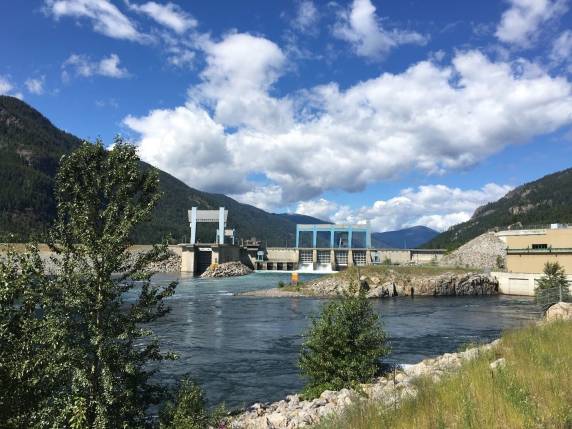
Hugh L. Keenleyside Dam and Arrow Lakes Generating Station, Castlegar, provided by BC Hydro
Treaty Fact: What does Called Upon Flood Control mean?
The phrase ‘Called Upon’ refers to a provision in the Columbia River Treaty that automatically takes effect in September 2024 when the 60-year Assured Flood Control regime expires. This provision remains in effect as long as the Treaty dams exist, even if the Treaty is terminated, unless a modernized Treaty is negotiated.
Under the Assured Flood Control regime, which has been in place since the Treaty was ratified in 1964, Canada operates with reserved space in its Treaty reservoirs to provide guaranteed flood risk management to the United States.

